Suseongdonggyegok Valley (수성동계곡)
0m 3 2023-08-17
185-3, Ogin-dong, Jongno-gu, Seoul 서울특별시 종로구 옥인동
Suseong-dong Valley's stream runs down from Inwangsan Mountain and joins Cheonggyecheon Stream, and it is said that the name of the village was called Suseong-dong during the Joseon dynasty due to the loud and clear sound of the flowing water. It appears in the painting "Jangdong Palgyeongcheop," which is Jangdong Eight Scenic Views, that depicts the eight scenic views of Bugaksan Mountain and Inwangsan Mountain as well as in other historical books of the Joseon dynasty as a place of scenic beauty. The valley was so famous for its beauty, that Prince Anpyeong of the Joseon dynasty built his house "Bihaedang" to fully enjoy the view, and the valley and its stone bridge were designated as a cultural property of Seoul in 2010.
Namdo Bunsik Seochon Branch (남도분식 서촌점)
364.78553455280286m 5901 2024-02-20
1F, 2 Ogin 2-gil, Jongno-gu, Seoul
Namdo Bunsik is a snack restaurant that caters to the tastes of the younger generation by adapting regional traditional cuisine. The flagship menu features namdo tteokbokki, an jeukseok tteokbokki (instant tteokbokki) crafted with various ingredients such as pollack, scallions, and radish, with the broth prepared in-house. The spiciness of the tteokbokki can be adjusted from level 1 to level 3. Another popular item is sangchu twigim (deep-fried lettuce), where deep-fried dishes and pickled onions are wrapped in lettuce for consumption.
OKIN PIZZA (옥인피자)
397.0213212965693m 5008 2021-03-19
26, Ogin-gil, Jongno-gu, Seoul
+82-2-737-9944
This is a Western cuisine located in Jongno, Seoul. The best menu at this restaurant is pizza. You can eat delicious pizza at hanok, a Korean traditional house.
Inwangsan Mountain Chosochaekbang (인왕산 더숲 초소책방)
424.96305469583496m 1 2024-03-06
172 Inwangsan-ro, Jongno-gu, Seoul
Inwangsan Mountain Chosochaekbang is a bakery and book café located along the trail of Inwangsan Mountain, remodeled from an old police station. Surrounded by glass walls within the forest, it blends seamlessly with nature, offering a panoramic view of Namsan Tower through the transparent windows. On the second floor terrace, guests can enjoy the scenic view of Seoul. Freshly baked bread and desserts are available daily, and the venue occasionally hosts book talks and music concerts.
NUHADANG [Korea Quality] / 누하당 [한국관광 품질인증]
487.63607418826604m 4321 2020-09-10
49-7, Pirundae-ro, Jongno-gu, Seoul
010-9692-1330
Guesthouse Nuha is a ‘hanok’ or traditional Korean house consisting of four guestrooms located in Nuha-dong, Seochon (west of Gyeongbokgung Palace, Jongno, Seoul) where many Confucian scholars and artists lived during the Joseon Dynasty.
Exuding a refined atmosphere, Guesthouse Nuha is very popular among not only domestic visitors but also foreign tourists who want to experience the flavor of Korea in a cozy hanok. All four guestrooms (An-bang, Sarang-bang, Geul-bang, and Byeol-dang) are covered with eco-friendly hanji (traditional Korean paper handmade from mulberry tree) wallpaper, and are equipped with a thick cotton-wool comforter and pillows imbued with the scent of Hinoki cypress tree to help guests relieve their fatigue.
Breakfast is served free of charge. Guests can also experience traditional Korean culture here, such as playing a Korean musical instrument (janggu or double-headed drum), playing a game of yut in the yard, or wearing hanbok (traditional Korean clothes). Although a local bus service passes through the village, it is highly recommended to take a quiet leisurely around the area.
SOSO House[Korea Quality] / 소소하우스[한국관광 품질인증]
491.3324576102441m 0 2024-01-19
16-5 , Pirundae-ro 5ga-gil, Jongno-gu, Seoul
+82-10-5286-0704
Soso House is a private hanok stay located in Seochon, Jongno-gu, Seoul. Once you enter the gate, you are greeted by a small yard paved with stones and an alpine apple tree. There is a stool on one side of the yard where you can enjoy a cup of tea on a sunny day. In the daecheong maru (wooden-floored hall, there is a master bedroom on one side and a kitchen on the other, and the master bedroom has an attic. Cooking is allowed, and complimentary breakfast includes toast, salad, and coffee, as well as complimentary homemade fruit syrup and tea bags. Gyeongbokgung Palace, Seoul Museum of History, and Park No-Soo Art Museum are all within walking distance.
Nuwa [Korea Quality] / 누와 [한국관광 품질인증/Korea Quality]
503.4915759773202m 3 2021-03-29
3-1, Pirundae-ro 5na-gil, Jongno-gu, Seoul
This hanok (traditional Korean house) is located deep in the Seochon Village, west of Seoul’s Gyeongbokgung Palace. Its tasteful renovation of a small 33 m2 hanok made it highly popular among the younger guests. The courtyard has a low maple tree and tastefully arranged stones, while the hanok is capable of accommodating up to 2 persons.
This L-shaped hanok has a full window wall facing the living room, which is furnished with a low walnut table and a bathtub. Visitors can enjoy premium tea at the table. The bathtub, which is connected to the table at one end, can be used mainly for a foot bath with bath salts that assist circulation. There is also a restroom in the building.
Nuwa’s bedroom has a circular window, much like the full moon, with a view of the garden and the fringes of the Inwangsan Mountain.
Inwangsa Temple (인왕사 (서울))
509.3977706845699m 14328 2020-04-02
16-1, Tongil-ro 18ga-gil, Jongno-gu, Seoul
+82-2-737-4434
Inwangsa Temple refers to the entire cluster of small Buddhist temples located on Inwangsan Mountain (alt. 338m) in the heart of Seoul. The eastern foot of the mountain has many scenic spots with its distinctively cozy and tasteful atmosphere, and the northern area called Mugye-dong also offers beautiful scenery. Inwangsa Temple was established in the early Joseon period (1392-1910) to guard the national palace Gyeongbokbung. The temple is comprised of 11 shrines from five different Buddhist orders. The unique design of each shrine adds pleasure to hikers on their way up to Seonbawi, an unusual rock formation that is a site of many folk beliefs and shamanist rites.
Hwanghakjeong Pavilion (황학정)
524.4660144875032m 19060 2020-04-02
15-32, Sajik-ro 9-gil, Jongno-gu, Seoul
+82-2-738-5785
Hwanghakjeong Pavilion was built in 1898 by decree of King Gojong’s. It was originally set up close to the northern wall of Hoesangjeon in Gyeonghuigung Palace for archery practice. In 1922 when the Japanese colonial government sold buildings of Gyeonghuigung Palace to the public to build Gyeongseong Middle School in the location, the Hwanghakjeong Pavilion was bought and restored at the current location, which is an old site of Deunggwajeong Pavilion located to the North of Sajik Park.
It is relatively large for a pavilion, but the structure is plain and simple. There is a well behind the pavilion to the southwest. A rock behind the well has an engraved poem about eight beautiful scenes of Hwanghakjeong. Located to the right of the pavilion building (northeast of the building) is Hancheongak Pavilion, which has unique roof. To the west of the pavilion is Sauhoegwan Hall that was built with reinforced concrete.
Thimbloom - Gyeongbokgung Branch (No. 2) [Tax Refund Shop] (팀블룸2호점 경복궁)
554.1361876893722m 0 2024-04-18
1F, BF (Nuha-dong), 46, Pirundae-ro, Jongno-gu, Seoul
-
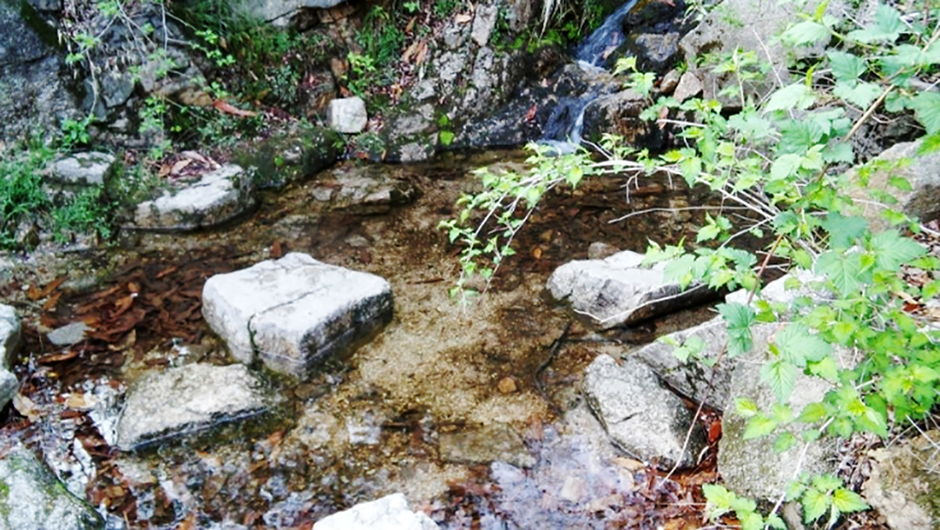
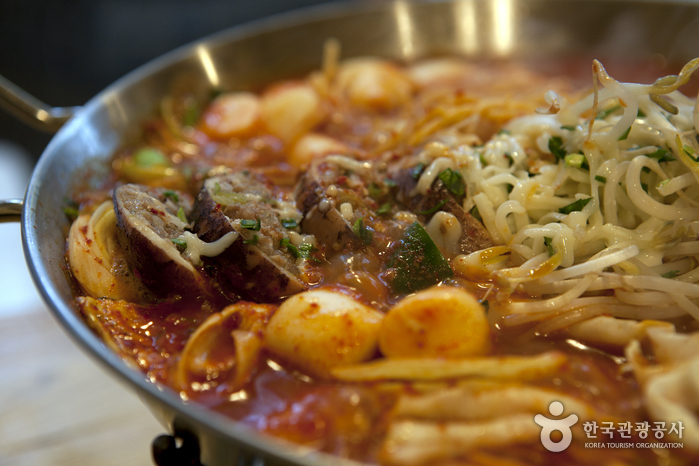
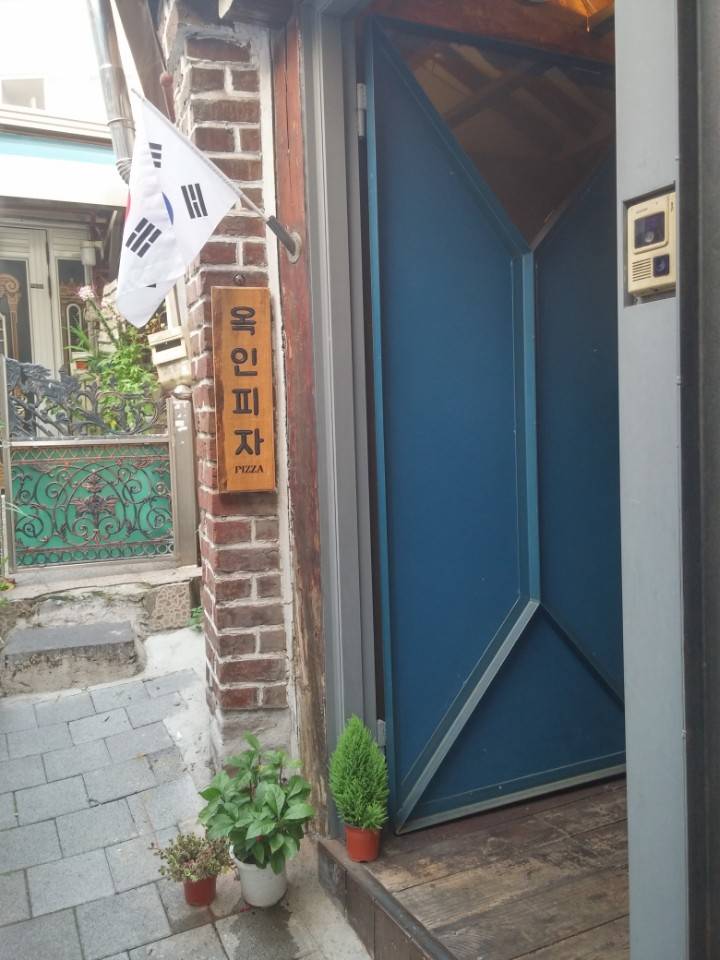
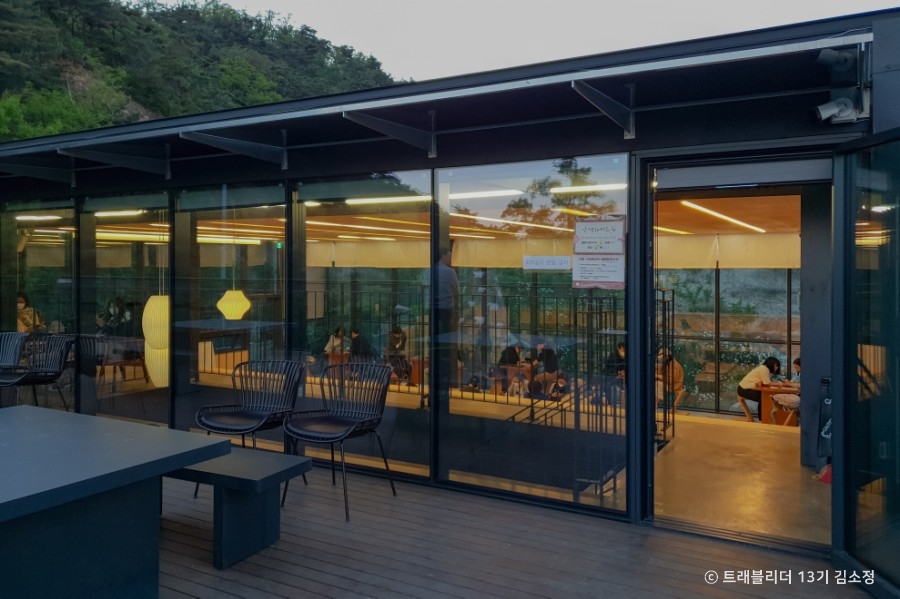
![NUHADANG [Korea Quality] / 누하당 [한국관광 품질인증]](http://tong.visitkorea.or.kr/cms/resource/58/2532358_image2_1.jpg)
![Nuwa [Korea Quality] / 누와 [한국관광 품질인증/Korea Quality]](http://tong.visitkorea.or.kr/cms/resource/07/2707607_image2_1.jpg)
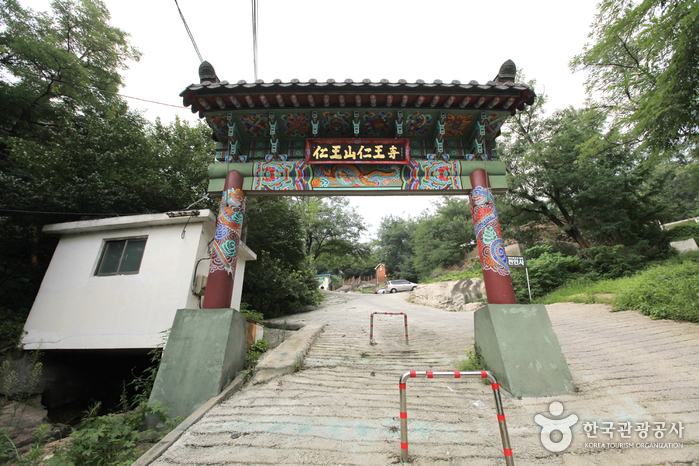
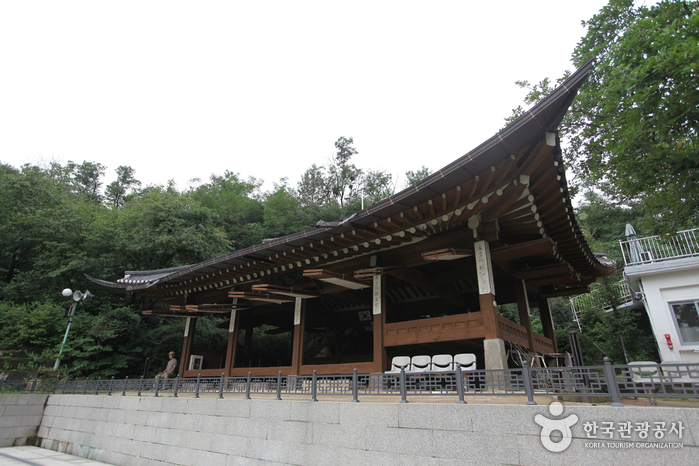
![Thimbloom - Gyeongbokgung Branch (No. 2) [Tax Refund Shop] (팀블룸2호점 경복궁)](http://tong.visitkorea.or.kr/cms/resource/14/2889714_image2_1.jpg)
 English
English
 한국어
한국어 日本語
日本語 中文(简体)
中文(简体) Deutsch
Deutsch Français
Français Español
Español Русский
Русский